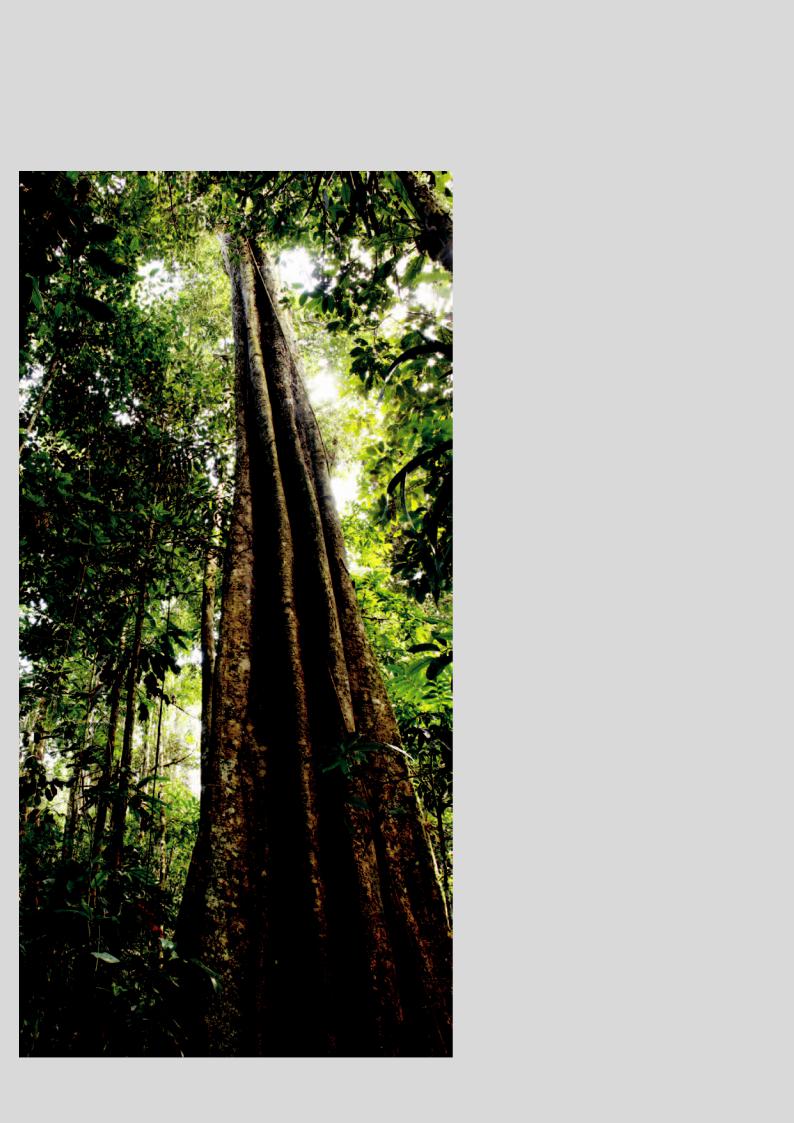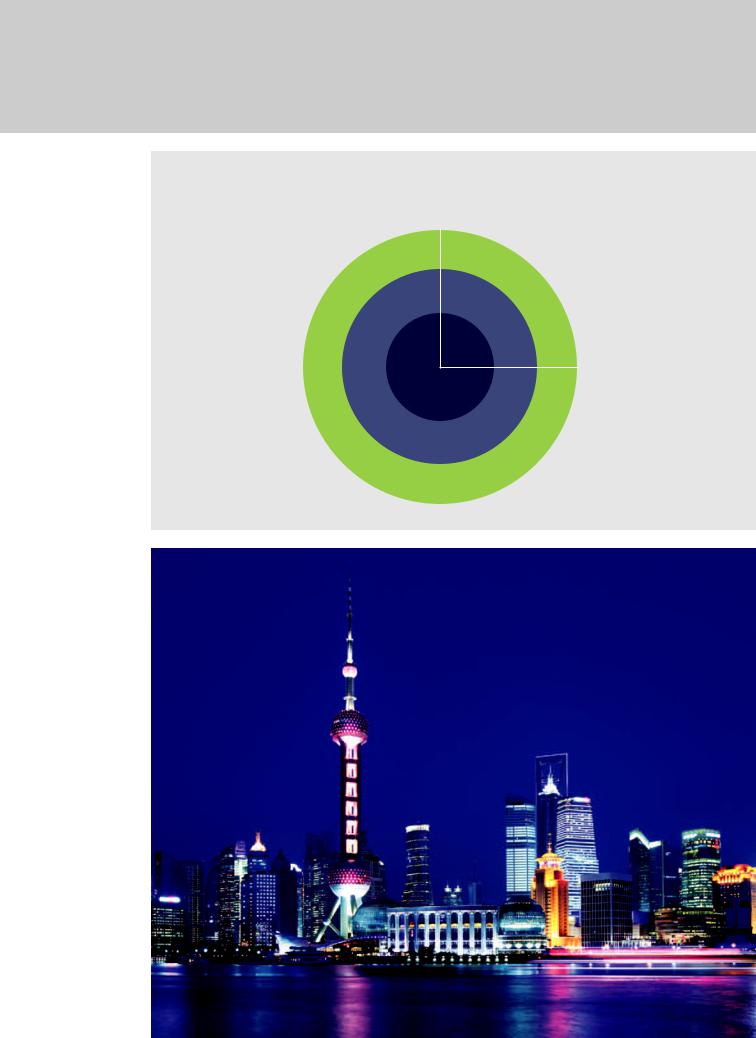
туризм
.pdf
Overview of macro-economic trends, 2000 to 2010
Travel & Tourism achieved healthy growth levels by most macro-economic measures between 2000 and 2010.
Travel & Tourism’s global economic contribution, 2000-2010
|
|
Growth (%) |
Travel & Tourism’s direct contribution to GDP |
|
9.7 |
Travel & Tourism’s total contribution to GDP |
|
16.6 |
Travel & Tourism’s direct contribution to employment |
8.3 |
|
Travel & Tourism’s total contribution to employment |
3.0 |
|
Capital investment |
|
41.8 |
Visitor exports |
|
20.1 |
|
|
Source: WTTC/Oxford Economics |
Gross domestic product (GDP) |
Employment |
|
Between 2000 and 2010, the growth in Travel & Tourism’s direct contribution to global GDP was volatile, with economic uncertainties, diseases and terrorist attacks all having an impact. The decade recorded a growth of 9.7% overall, with Travel & Tourism’s direct contribution to GDP ending the period at US$1,770 billion in 2010 (based on 2011 prices).
Regionally, the balance of growth was uneven. Africa and the Middle East saw Travel & Tourism’s direct contribution to GDP rise by 69.6% and 64.7% respectively, while Asia Pacific and Latin America enjoyed increases of approximately 43%. Europe, meanwhile, suffered a decline of 9.9% over the same period, and
the USA, the world’s largest market in monetary terms, was down 5.3%.
If the GDP impacts created by investment and supply-chain effects are taken into account, the total Travel & Tourism industry was worth US$5,760.9 billion in 2010 (in terms of its contribution to GDP) – a rise of 16.6% over its 2000 level, albeit down US$98.2 billion on its 2007 pre-credit crunch peak.
Globally, direct employment in Travel & Tourism rose 8.3% from 2000 to 2010, equivalent to the creation of an additional 7 million jobs.
But annual growth rates fluctuated sharply. The impact of 9/11, in particular, contributed to a decline of 3.1% in 2001, while 2004 saw the fastest growth of the decade, of 4.5%. An
employment peak of 98.6 million was reached in 2006, and not exceeded until 2011.
The global distribution of growth in direct Travel & Tourism employment was again very uneven. Exactly two-thirds of worldwide growth occurred in Asia, where the number of Travel & Tourism jobs rose by almost 5 million between 2000 and 2010 – 2.8 million of which in China alone.
The fastest growth in percentage terms was in the Middle East, North Africa and Latin America, where policy-makers began to take steps
to unlock the economic potential of Travel & Tourism, and individual destinations benefited from the rapid expansion of global air travel. The United Arab Emirates (UAE), for example, saw remarkable growth of 167.9% in direct Travel & Tourism employment over the decade as Dubai and, more recently, Abu Dhabi became premier international business and leisure tourism hubs.
Travel & Tourism 2011 |
|
9 |
|
|
|

A Decade of Challenge and Change
Employment growth in mature markets proved more difficult to achieve. Both Europe and the USA saw declines of 10.5% in direct Travel & Tourism employment between 2000 and 2010
– although the underlying trend appears more stable if the one-off effects of 9/11 and the 2008-2009 economic recession are discounted.
If the additional Travel & Tourism employment impacts generated through investment and the supply chain are included, the number of Travel & Tourism jobs worldwide increased by 17.6 million between 2000 and 2008 (peak to peak on the world economic cycle), and by 11.6 million between 2002 and 2010 (trough to trough).
Growth in the direct contribution of Travel & Tourism to employment and GDP, 2000-2010
80% |
|
|
|
|
|
|
|
60% |
|
|
|
|
|
|
|
40% |
|
|
|
|
|
|
|
20% |
|
|
|
|
|
|
|
0% |
|
|
|
|
|
|
|
-20% |
Europe |
North |
Latin |
Middle |
Africa |
Asia |
World |
|
|||||||
|
|
America |
America |
East |
|
|
|
ν Direct T&T Employment
ν Direct T&T GDP Source: Oxford Economics/WTTC
Capital investment
The decade through 2010 enjoyed a rapid rise in investment across the Travel & Tourism industry, as destinations became more competitive in their pursuit of increasingly affluent global travellers.
Globally, Travel & Tourism capital investment rose by 41.8% between 2000 and 2010, and by 66.3% to 2008 – ie before the availability of development finance was hit by the credit crisis.
Travel & Tourism investment peaked at US$726.8 million in 2008 (2011 prices), with the Americas and Asia Pacific each accounting for 34%, and Europe for 23%, of the total.
All world regions have seen solid growth in Travel & Tourism investment since 2000, with the exception of Western Europe. In the USA, despite sluggish growth in industry GDP and employment, there has been a concerted drive in investment to remain competitive, with Travel & Tourism capital outlays up by a third from 20002008 and by 20% between 2002 and 2010.
The highest percentage growth rates in Travel & Tourism investment have predictably been seen in Asia, some parts of Africa and the Middle East. This includes overall growth of more than 600% in India from 2000-2010, and 230% in the UAE. However, in both cases this rapid growth stemmed from a very low base, and annual investment is still, in absolute terms, a small fraction of that made in the USA or Europe.
Visitor exports
Total worldwide visitor exports (ie spending by foreign visitors on Travel & Tourism goods and services, including transport, outside their
home countries) grew by 20.1% between 2000 and 2010. This was significantly faster than the corresponding growth in industry GDP or employment over the same period.
SPENDING BY VISITORS ACROSS THE WORLD GREW BY 20% BETWEEN 2000 and 2010
10 |
|
Travel & Tourism 2011 |
|
|
|

Particularly strong growth in visitor exports was seen between 2004 and 2008, with annual growth of 8.7% in 2004 alone. This was in line with the wider economic climate of the time, with unprecedented levels of disposable income among consumers (and business profits), combined with a rapid expansion of airline passenger services and a significant rise in the demand for foreign travel for both business and leisure.
Although European and North American consumers still accounted for 60% of worldwide visitor exports by 2010, the most notable trend over the decade was the growing contribution of Asian travellers to the total, rising from a 19% share in 2000 to 25%. Growth in incomes in both emerging and developed Asian markets drove a rise in the region’s visitor exports of US$99.2 million from 2000-2010 – equivalent to more than half the overall global increase over the same period.
While the region’s population is much smaller, the US$33.1 million rise in visitor exports from Middle Eastern consumers in 2000-2010
– more than the corresponding increase generated by European and North American travellers combined – is also significant, and probably indicative of future trends.
The fast-changing operating environment
Driven in large part by the different events that coloured the first decade of the 21st century, but also by the economic environment, emerging markets and rapid advances in technology – notably in digital and social media – the Travel & Tourism industry was also confronted with a whole host of new challenges which have had a profound effect on the way the industry is structured.
Emphasis on safety and security
Arguably, 9/11 was one of the most influential events in terms of its impact on recent world history, not least on Travel & Tourism. Although terrorism was by no means new to the industry or the travelling public, 9/11 brought to the fore a host of issues concerning safety and
security within the sector. Tighter border controls including stricter visa regulations, heightened airport security screenings and body scanners, as well as the introduction of biometrics for identification purposes, are just some of the measures introduced to address safety and security issues – and which, in the process, have added to the hassles of flying for the general public.
Low-cost carriers
The aviation sector has undergone a significant structural transformation over the past decade, with the birth of a new airline model, the lowcost carrier (LCC). With their focus on no-frills, point-to-point services, LCCs have had a significant impact on the demand for airline travel, making it suddenly affordable for a much wider segment of the population in all key world regions. Operating to/from less-used secondary airports, LCC services have also helped to open up and regenerate smaller regions, boosting employment and spreading prosperity. While the future growth of the LCC model is linked inextricably to the price of oil, the rapid growth of LCC services over the past ten years has also put significant pressures on full-service, legacy airlines to reduce fares and costs in order to remain competitive.
Travel & Tourism 2011 |
|
11 |
|
|
|

A Decade of Challenge and Change
The rise of internet
and mobile communications
Not surprisingly, given the huge advances in technological applications for the Travel &
Tourism industry – and, in particular, distribution
– today’s consumer is constantly plugged into the World Wide Web. Thanks to online research, tourists of all ages are also much more informed about available products and services when they make their travel decisions. They now tailor their own itineraries and packages, comparing prices and products – even controlling prices by putting in bids for products and services on sites such as Priceline. Mobile technology has taken this one step further and consumers are now
able to research, book and review products on the move.
User-generated content and social media
Web 2.0 has had a profound impact on the way tourism products are marketed. While marketing material in the past, whether
onor off-line, was controlled, developed and distributed by the destination or company, consumer reviews are now part and parcel of any website. And third-party websites, such as TripAdvisor, have paved the way in
giving consumers a voice. Social media has further extended the power of individual consumers to voice their opinions and make recommendations, often using real-time photos or videos.
Shorter, more frequent leisure trips
With travel becoming so much more accessible, in terms of destination and product choice
as well as price, the ten years between 2000 and 2010 spurred a rapid increase in travel frequency, with the growth in short breaks not surprisingly outpacing that of longer leisure trips. Not only did this boost domestic travel but, at the market’s peak in 2008-2009, a significant share of Europeans – especially those suffering time constraints – were taking upwards of four to five foreign short breaks a year, often at the expense of longer annual holidays. And the trend has spread to Asia, where the rising new middle classes have also been quick to take advantage of the new opportunities to travel abroad.
The changing consumer
Fast-growing emerging markets, such as Brazil, India, China and Russia (the BRICs), have also been a game changer, forcing the Travel & Tourism industry to focus greater attention in terms of marketing and product development on new travel source regions, especially Asia. The surge in demand from China, in particular, has resulted in hotels and other suppliers employing Mandarin speakers, introducing menus catering for Chinese consumers, and generally placing much more emphasis on specialised, on-the- job market training. In the Western world, an ageing population with time and money to spare has also had an important bearing on
the industry’s development, both in terms of product and marketing/distribution. Furthermore, the rise in ‘green consumerism’ – increased environmental awareness and concern about issues such as climate change – has led to a greater focus among consumers on authenticity in destinations, products and travel experiences.
12 |
|
Travel & Tourism 2011 |
|
|
|

FOCUS |
|
Environmental sustainability |
|
|
is now a central theme |
|
|
|
The Travel & Tourism industry is undergoing a revolution in sustainable practices. More and more hotels, attractions and entertainment facilities, as well as transport companies, are signing up to basic environmental codes and to corporate social responsibility (CSR), and many are overhauling business models to incorporate social, cultural and environmental sustainability.
As consumer preferences evolve to demand better environmental performances by the companies from which they buy their travel, forward-thinking entrepreneurs are carving out lucrative new niches in the market – from eco-hotels to purpose-built, carbon-neutral convention centres, with holiday packages increasingly encompassing some form of ‘voluntourism’. Most importantly, Travel & Tourism’s close relationship with the natural environment – effectively its nine-to-five ‘office’
– is causing more and more of its leading companies to embrace the concept of optimal, rather, than maximum, profitability.
Travel & Tourism has strong inherent links to the environment. In some countries, the natural environment and its wildlife, flora and fauna are what distinguishes them from other tourism destinations. Industry, governments, investors, communities and travellers therefore have a clear vested interest in preserving the local
environment and ensuring the sustainable use of its resources for the benefit of future generations.
Travel & Tourism 2011 |
|
13 |
|
|
|

FOCUS
Environmental sustainability is now a central theme
Factoring the environment into the Travel & Tourism business model
Travel & Tourism companies increasingly appreciate the active role they can play in advancing environmental sustainability, and they understand the potential environmental footprint attached to their tourism activities. So it is more and more common to see companies mainstreaming sustainability strategies and techniques into their business models. Intense competition for resources such as land, water and food, coupled with the rapidly increasing population and mounting waste issues, put extreme pressures on the environment. This gives the industry a huge responsibility to ensure the sustainability of the environment on which Travel & Tourism so heavily depends.
In some areas, Travel & Tourism has been the driving force behind the conservation of fragile ecosystems on land and in the sea while protecting the natural species. Industry has lobbied governments for the protection of wildlife and marine resources that have been
inappropriately used, either for food or gaming. It increasingly funds such ventures, thereby increasing the economic value of the area. In addition, preservation enhances environmental awareness among residents of the importance of the area’s biodiversity, and opens up opportunities for alternative sources of income.
Climate change
has taken centre stage
Climate change is a global issue that has moved to centre stage in the last few years and the industry has played an increasing role in addressing the related concerns since it acknowledges the impact of its operations on global greenhouse gas (GHG) emissions. Many Travel & Tourism companies and organisations around the world are taking proactive steps to mitigate carbon emissions and to help countries manage the adverse effects resulting from, or associated with, climate change.
This often involves investing in new technologies, changing or improving new and existing infrastructure, and implementing different policies and measures to increase the sustainability
of their supply chains and the products and services they offer to consumers. In destinations, Travel & Tourism can help communities adopt practical strategies to deal with the impacts of a changing climate.
14 |
|
Travel & Tourism 2011 |
|
|
|

Showcasing sustainability
WTTC Tourism for Tomorrow Awards
Since 2004, WTTC’s Tourism for Tomorrow Awards have been showcasing best practice in sustainable tourism around the world. The Awards celebrate destinations, organisations and businesses which embrace environmental, cultural and social sustainability as part of their everyday operations. Winners are selected after a rigorous, three-stage judging process that includes an onsite evaluation, and they represent the diversity of Travel & Tourism from small community projects to global businesses, located in all corners of the world. Recent winners include:
Accor, France
One of the world’s leading hospitality groups with a philosophy based on respect for diverse cultures, incorporating environmental best practices in all its operations. The group’s approach to holistic, sustainable management is based on two pillars: EGO, including programmes for local development, protecting children, combating epidemics and promoting healthy eating; and ECO, including the reduction of water and energy consumption, and the improvement of waste sorting and recycling, as well as the preservation of biodiversity.
Alpine Pearls, Austria
To ease heavy traffic congestion in one of Europe’s most popular tourism areas – the Alpine communities of Italy, Germany, Switzerland, Austria, Slovenia and France – the 24-member Alpine Pearls network has developed an innovative approach to providing sustainable transport between villages, including solar-powered electric vehicles, low carbon public transport and the free use of bicycles for tourists who leave their cars behind.
Intrepid Travel, Australia
A group experiential tour operator that takes approximately 100,000 travellers to 130 countries each year. In addition to fair trade sourcing of its supply chain and environmentally friendly practices such as measuring, reducing and auditing its carbon emissions at 30 global offices, the non-profit Intrepid Foundation also actively supports health care, education, human rights, child welfare and sustainable development in the destinations visited by Intrepid Travel’s customers.
Singita Pamushana, Zimbabwe
A luxury safari lodge which has been instrumental in the rehabilitation and protection of 123,000 acres of degraded wildlife habitat. The Malilangwe Wildlife Reserve now includes 38 different habitats that are home to 4% of all bird species in the world, along with rare and endangered animals, including the black rhino, white rhino, Liechtenstein’s hartebeest and African wild dogs, among other wildlife. The lodge and the Trust employ over 200 staff, almost all local Zimbabweans, while providing clean, drinkable borehole water and a nutritional outreach programme to more than 10,000 villagers in the area.
Whale Watch Kaikoura, New Zealand
A 100% Maori-owned and locally operated company located in the small coastal town of Kaikoura, offering marine-based whale-watching tours year round. Profits from the tourism business have been used to secure land for the local Maori population, as well as benefiting the local community through employment, donations to the hospital, coastguard and fire brigade, and funding of marine research.
Travel & Tourism 2011 |
|
15 |
|
|
|

3 2011; A Mixed Picture
The last ten years have confirmed Travel & Tourism’s resilience. Despite blips in the growth curve due to factors beyond the industry’s control, demand has bounced
back from terrorist attacks, natural disasters and political and economic crises. In 2011, this resilience is being tested to its limits with uprisings in tourism-intensive countries such as Egypt and Tunisia, social unrest in other parts of North Africa and the Middle East, the devastating tsunami and nuclear crisis in northeastern Japan, sovereign debt crises in several European countries, and the prospect of a double-dip recession.
However, while estimates for 2011 may yet be downgraded as a result of the renewed economic downturn and concerns about financial markets, there is no doubt as to the industry’s future growth potential.
Travel & Tourism is already more important than the automotive industry, in terms of its
contribution to GDP, and current trends suggest that it will overtake the financial sector in the foreseeable future.
GLOBAL TRAVEL & TOURISM SPENDING SUPPORTS NEARLY 1 in 12 jobs worldwide
THE OVERALL ECONOMIC VALUE OF TRAVEL & TOURISM IS MORE THAN THREE TIMES GREATER THAN ITs DIRECT CONTRIBUTION
A US$6 trillion global industry
The huge scale of the global Travel & Tourism industry is clearly illustrated by estimates of its economic contribution. Across the world, Travel & Tourism is expected to directly contribute US$1,850 billion to global GDP in 2011, and to support over 99 million jobs directly in the industry. This means that the industry accounts directly for 2.8% of global GDP and for 3.4% of worldwide employment.
But Travel & Tourism’s full economic contribution is much greater than even these figures imply. In fact, research by WTTC and Oxford Economics suggests that its overall economic value is more than three times greater than estimates of its direct contribution.
When the indirect and induced effects are added to the direct impacts – accounting for the wider effects from investment, the supply chain and the spending of Travel & Tourism industry workers – the total economic contribution of Travel & Tourism to global GDP is expected to be around US$5,992 billion in 2011, while its total contribution to worldwide employment will be almost 260 million jobs. These figures represent just over 9% of global GDP and nearly 9% of employment – almost a tenth of the world economy.
16 |
|
Travel & Tourism 2011 |
|
|
|

Breakdown of Travel & Tourism total contribution to GDP and employment, 2011
GDP (2011 US$bn)
22,828 |
|
|
|
|
3,032 |
|
|
|
|
1,110 |
99,048 |
113,295 |
46,249 |
Employment |
Direct |
|
|
(’000) |
|
|
|
|
||
+ Indirect |
|
|
|
|
+ Induced |
|
|
|
|
Source: Oxford Economics/WTTC
Travel & Tourism 2011 |
|
17 |
|
|
|

2011; A Mixed Picture
Regional contribution to world direct Travel & Tourism employment, 2011
Regional contribution to world direct Travel & Tourism GDP, 2011
νChina
νIndia
νRest of world
νAdvanced economies (EU15, USA, Japan)
νChina
νIndia
νRest of world
νAdvanced economies (EU15, USA, Japan)
Source: Oxford Economics/WTTC |
Source: Oxford Economics/WTTC |
Travel & Tourism benefits all world regions
All regions of the world benefit from Travel & Tourism to a substantial degree, although there are clearly important differences in the way they each contribute to the global Travel & Tourism industry. As an example, although China and India between them account for half of global Travel & Tourism employment, the world’s two fastest-growing economies currently generate just 10% of global Travel & Tourism GDP.
The reasons for this are easy to explain. Productivity and income per worker, are much higher in advanced economies like the USA, Japan and the EU15. Together, these developed economies account for over half of world Travel & Tourism GDP despite a relatively low share of Travel & Tourism jobs. And this is despite the fact that productivity in emerging markets is typically higher in tourism than in the rest of the economy, while the reverse is true in developed economies.
ALMOST 50 MILLION PEOPLE ARE DIRECTLY EMPLOYED BY THE TRAVEL & TOURISM INDUSTRY IN CHINA AND INDIA ALONE
In the Americas, the industry is expected to support a direct contribution to GDP of US$629 billion in 2011, and to support 15.8 million direct jobs. When indirect and induced impacts are added, Travel & Tourism’s total economic value will rise to US$1,948 billion in GDP and almost 40.7 million jobs. Not surprisingly, the major contributor to Travel & Tourism in the Americas is the USA, which accounts for no less than 69% of industry GDP across the region. But Travel & Tourism still plays a crucial economic role in other countries in the region, both large and small, and many of the Caribbean islands are in fact among the most Travel & Tourism-dependent economies in the world. Antigua & Barbuda, for example, is dependent on Travel & Tourism for 74% of its total GDP.
Travel & Tourism in Europe is expected
to contribute directly US$555 billion to GDP in 2011, and to support 9.7 million direct jobs. Including the wider impacts, the total economic value of Travel & Tourism should be US$1,535 billion in GDP and 28.1 million jobs. This contribution will be more evenly shared across the major destinations in Europe than is the case in the Americas, with
the major beneficiaries being France (15% of total regional Travel & Tourism GDP), Spain (13%), Italy (11%), the UK (11%) and Germany (10%).
18 |
|
Travel & Tourism 2011 |
|
|
|
